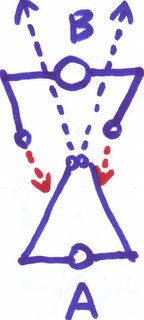Sorry for derailing the side-thread.
Is a myth 99% of the time. The reality is that you can't apply the joint lock whatsoever on a person of similar build and strength if the person resists. You just get stuck. Believe me, I have challenged people on it, including instructors giving out the lecture, and others have too. They can't apply it to me and I can't apply it to them. Simple as that.
So where does this notion stem from that you have to cooperate? It's just not true.
With that in mind, how do you know where your level of Aikido is if it's never tested? What are the criterias? Is it something to do with center of gravity and balance, flow? I have no idea since it's a cooperation between individuals.
Out of curiosity, which joint locks did you try?
Aikido is primarily trained in the form of kata ("forms" or drills). Uke (the "receiver", which often means the one who attacks and then gets "aikidone") must attack sincerely within the framework of the kata. This means that, if the kata requires that uke grab his partner, uke must grab with the intention of blocking tori's wrist (or pulling or pushing him depending on what is being taught). Uke must also try to maintain structure, strength and balance as much as possible.
This provides his partner (tori) with resistance against which he must perform the kata. If tori does not develop the proper technique and conditioning, he will fail against this resistance. Conversely, if tori manages to perform the kata under those conditions, it means that his aikido is good enough to overcome this resistance.
However, an important caveat is that uke's attack must be
sincere: it needs to provide the necessary resistance but still needs to stay within the limits of the kata, it's not sparring: if the kata requires me to just do a grab, I will grab strongly but I will not start yanking in every direction or headbutting my partner: that would not be "resisting the technique", it would be a form of sparring.
With this in mind, if you expect a particular technique to be applied to you when you are sparring and know that it's coming, it's on you for not understanding that it's a drill. On the other hand, if you resisted by simply grabbing/striking hard, with good form and maintaining structure and balance, and your instructor was not able to overcome that sincere resistance, quite frankly I would not want to train under him: good aikido takes your balance and brings you down without you having to compromise your own balance, structure or the strength of your attack.
As regards your second question, here's a quick roadmap for aikido progression:
Beginner - knows the motions
Intermediate - manages to overcome uke's resistance in static kata, may struggle against certain people (particularly strong/tall/short/flexible/whatever ukes)
Advanced - smoothly overcomes uke's resistance in static kata, can apply the technique in dynamic kata (which requires greater sense of timing, flow and distance)
Very advanced - smoothly overcomes resistance in both static and dynamic kata, can smoothly apply techniques in freestyle
Some styles do not train with resistance and require uke to stop maintaining his own structure (i.e. grab without impeding tori's movement) or "choose" to do something in the middle of the technique for it to work. This stems from incorrect technique. For example, I was taught by an Aikikai 5th dan that, when tori brings me down during the following technique, I should try my best to stand back up (and then tori throws me the other way):
As a beginner, I said "why should I stand up so you can clothesline me?", the teacher replied "because that's the most natural thing to do". For me, now as back then, the natural thing to do when I am brought down and forward is either to fall down or keep moving forward, not try to stand up while running in circles around tori. I was told that it was because I should think like a warrior and, since the other options were dangerous (I was never shown why), in the heat of the battle my first reaction should be to straighten up (so that I can be thrown).
When I entered an Iwama aikido school, I learnt that, with proper technique, uke never "needs to straighten up" or even gets a chance to walk away as he is never brought "down and forward": tori enters and take uke's balance to the rear/outside, takes control of his spine and throws him.
I hope this helps.


